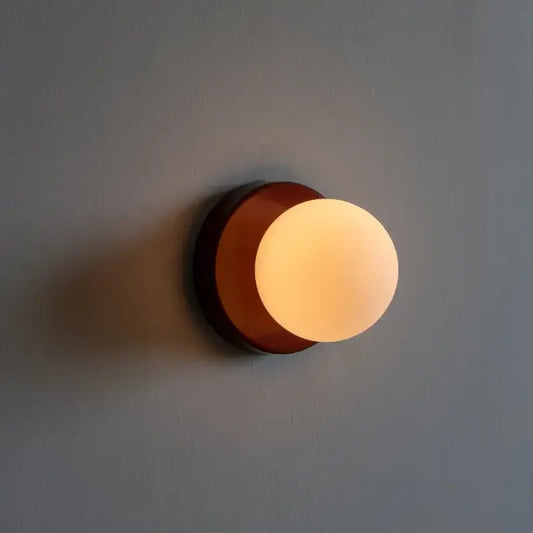
The Rise of Wabi-Sabi: A Timeless Elegance in Contemporary Interior Design
|
|
Time to read 3 min

Discover new arrivals in modern lighting, home decor, and Scandinavian design—updated weekly...
|
|
Time to read 3 min
Introduction
In recent years, Japanese minimalism has emerged as a powerful design force, captivating the global interior design community. At the heart of this movement lies the essence of the Wabi-Sabi aesthetic, a profound aspect of traditional Japanese aesthetics. Wabi-Sabi embodies a simple beauty that can withstand the test of time, celebrating imperfections, and embracing the beauty of the natural and the aged. Designers have ingeniously transformed the traditional Wabi-Sabi style, making it more relevant and in tune with modern aesthetic sensibilities. As a result, Wabi-Sabi has become one of the hottest design styles of the moment, embraced by prominent figures like tennis player Maria Sharapova and American socialite Khloe Kardashian. This article presents an exploration of the growing popularity of Wabi-Sabi and features Wabi-Sabi style projects from around the world, ranging from commercial spaces to residences. From luxurious hotels and captivating showrooms to inviting restaurants and inspiring homes, this comprehensive look at contemporary interior design highlights the masterful use of Wabi-Sabi elements.
The Essence of Wabi-Sabi
Wabi-Sabi is deeply rooted in Japanese philosophy and is often associated with Zen Buddhism. It appreciates the beauty found in imperfections, simplicity, and the transient nature of all things. Unlike modern design trends that seek perfection and precision, Wabi-Sabi finds beauty in the aged, weathered, and naturally evolving. This aesthetic celebrates the asymmetry, patina, and unique characteristics that come with the passage of time.
Designers have been drawn to the concept of "not stripping away its rhythm," an essential aspect of Wabi-Sabi. This principle guides designers to avoid excessive ornamentation and unnecessary additions, allowing the space to breathe and exude its inherent charm. By following this concept, contemporary designers have successfully infused the essence of Wabi-Sabi into modern interiors, creating spaces that feel organic, authentic, and harmonious.
Wabi-Sabi's influence has transcended borders, and its charm has captivated designers and homeowners worldwide. The appeal lies in its ability to connect with our longing for simplicity, mindfulness, and a deeper connection with nature. From tranquil retreats in the countryside to urban oases in bustling cities, Wabi-Sabi interiors offer a sanctuary from the fast-paced world.
Prominent designers and architects from different corners of the globe have embraced Wabi-Sabi in their projects. From Japan to the United States, and Europe to Australia, the global presence of Wabi-Sabi is evident in a diverse range of design styles, reflecting its universal appeal.
Featured Projects and Designers
This article features over 30 remarkable Wabi-Sabi style projects that showcase the versatility and adaptability of this aesthetic. From commercial spaces such as award-winning hotels, showrooms, and restaurants to soulful residences, each project embodies the essence of Wabi-Sabi in its unique way.
Influential Designers in the Wabi-Sabi Genre
The article also highlights the most influential designers and architects who have embraced the Wabi-Sabi genre, creating their own Wabi-Sabi-inspired homes and spaces. Designers like Axel Vervoordt, Vincent Van Duysen, and Tadao Ando have become pioneers in infusing contemporary design with the essence of Wabi-Sabi, inspiring a new generation of designers to explore this aesthetic.
References:
Conclusion
Wabi-Sabi has emerged as a transformative design force, capturing the imagination of designers and design enthusiasts alike. Its allure lies in its ability to harmonize simplicity, authenticity, and a deep appreciation for the natural world. From traditional Japanese aesthetics to contemporary global design, Wabi-Sabi offers a timeless elegance that is both relevant and enduring. This article has presented a comprehensive overview of the growing popularity of Wabi-Sabi, featuring a diverse range of projects and designers who have embraced the essence of this aesthetic. As Wabi-Sabi continues to inspire and shape the design landscape, its influence promises to endure and enrich our lives with its serenity and beauty.
Like our Magazine? You will like our store even more with all its curated homeware, modern lighting, kitchen utensils and Wall Art. We also recommend that you sign up to our newsletter or follow us on social media to find out about our news article releases, promotions and discount codes.

